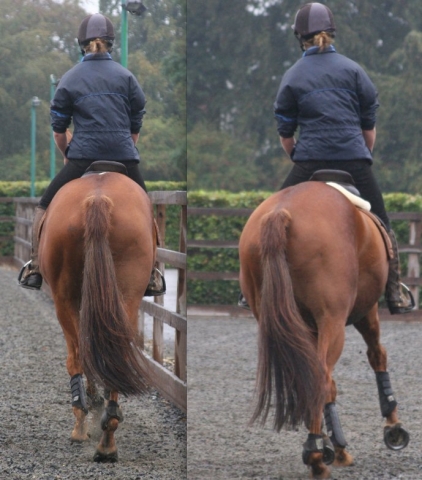
Should Vets Be Concerned About Saddle Fit?
Equine vet Dr Sue Dyson has collaborated with Master Saddlers and saddle fitters Mark Fisher and Sue Carson to produce a practical, illustrated tutorial to help vets understand the significance of saddle fit on the health and welfare of horse and rider http://bit.ly/1PRzWS5. The article has been published in the Equine Veterinary Education Journal, the official education journal of the British Equine Veterinary Association (BEVA) and is free to view until April 2016.
Saddle fitting, recognising an ill-fitting saddle and the consequences of an ill-fitting saddle to horse and rider was produced as a direct result from the discussions at the Saddle Research Trust (SRT) 2nd International Research Workshop, held after the SRT International Conference in November 2015. The paper encourages vets to work as part of a multi-disciplinary team, with saddle fitters, trainers and physiotherapists, to help educate horse owners about the multiple problems that can be caused by ill-fitting saddles.1
Key advice from the paper includes:
· The saddle should be assessed off and on the horse, without and with a rider.
· The fit of the saddle for both the horse and rider must be evaluated.
· A well-fitted saddle should distribute weight evenly via the panels to the horse's thoracic region, with complete clearance of the spinous processes by the gullet.
· The saddle should remain fairly still during ridden exercise at all paces.
· The saddle must also fit the rider to enable them to sit in balance.
· Signs of an ill-fitting saddle include equine thoracolumbar pain, focal swellings under the saddle, ruffling of the hair, dry spots under the saddle immediately after exercise surrounded by sweat, and abnormal hair wear.
· If a saddle does not fit the rider, the rider may not be able to ride in balance with the horse, and this may induce equine thoracolumbar pain.
· A saddle of inappropriate size and shape for the rider may induce rider back pain, ‘hip’ pain, sores under the ‘seat bones’ and perineal injuries.
The paper also includes a glossary of saddlery terms, an explanation of saddle fit accessories, a range of informative photographs and a section on who is qualified to provide professional advice on saddle fit.
The paper concludes: “Correct saddle fit for horse and rider is an important equine welfare issue and the veterinary profession needs to recognise this and be at the forefront of helping to educate the horse owning public. Ideally veterinarians should work in conjunction with professional saddle fitters, trainers and physiotherapists to improve both horse and rider comfort.”
The full article is available to download without charge for six months, until April 2016, with kind permission from Equine Veterinary Education, in association with the American Association of Equine Practitioners, published by John Wiley & Sons Ltd. The publishers will monitor the impact of this article and if successful, they may repeat the offer in future to help disseminate other key messages.
The SRT 3rd International Conference will be held on Saturday 2nd December 2017, with the Researchers' Workshop following on Sun/Mon 3/4th December 2017.
For further information visit www.saddleresearchtrust.com
Reference
1Saddle fitting, recognising an ill-fitting saddle and the consequences of an ill-fitting saddle to horse and rider S. Dyson, Centre for Equine Studies, Animal Health Trust, Suffolk, UK, S. Carson, Sue Carson Saddles, Brassington, Derbyshire, UK, M Fisher, Woolcroft Equine Services Ltd., Wisbech, Cambridgeshire, UK
-ENDS-
Notes to editors
· Further information from Bright Bay, +44 (0) 1986 784562, 07768 958911, [email protected]
The Saddle Research Trust was founded in 2009 to promote the welfare of the ridden horse and to raise awareness of the widely underestimated issues surrounding saddles, equine backs and performance. Trust Director, Anne Bondi, is currently undertaking a Doctoral Research Programme at the University of Sunderland, studying the interaction of horses, saddles and riders. The SRT facilitates collaborations between its Research Associates and promotes objective scientific research in order to further its
More from The Saddle Research Trust
- Saddle Research Trust Conference spreads equine welfare and performance knowledge worldwide
- What’s in it for the horse to be discussed at Saddle Research Trust Conference
- Host of hot topics on the agenda at Saddle Research Trust Conference
- The gait analysis revolution to be discussed at Saddle Research Trust Conference
- State-of-the-art riding simulator to be unveiled at Saddle Research Trust Conference

 10 years ago
10 years ago  1579 views
1579 views

 1 week ago
1 week ago